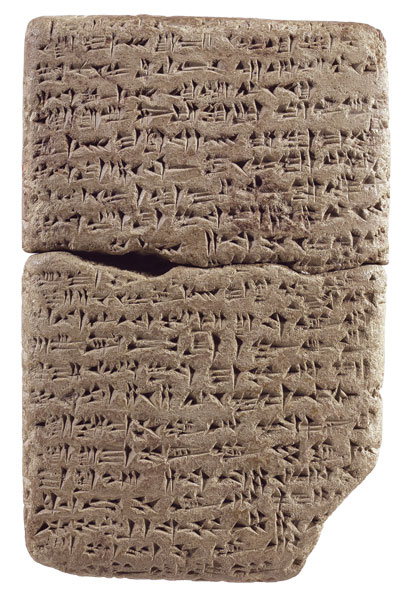Image Details

Bildarchiv Preussischer Kulturbesitz/Art Resource, NY
FILE COPY. The newly discovered Jerusalem tablet, which was made from local clays, may well have been an archival copy of one of the letters that Abdi-Heba, king of Canaanite Jerusalem, sent to the Egyptian pharaoh Akhenaten (1353–1337 B.C.E.). Several of Abdi-Heba’s letters to the pharaoh, including this one, were found among a cache of more than 300 cuneiform letters of diplomatic correspondence discovered at el-Amarna (Akhenaten’s capital city of Akhetaten) in Egypt in the late 1800s. In the surviving letters, the ever-loyal Canaanite king implores Pharaoh to send more troops to Jerusalem so that he can defend the city against the machinations and plots of neighboring Canaanite kings.
Leading Assyriologists Wayne Horowitz and Takayoshi Oshima, who compared the cuneiform signs from the Jerusalem fragment with those from Abdi-Heba’s letters, found that the signs are not only similar, but also share the same degree of skill and sophistication. This similarity suggests that the fragment was likely produced by the same school of 14th-century royal scribes that crafted Abdi-Heba’s letters to the pharaoh in Amarna.
